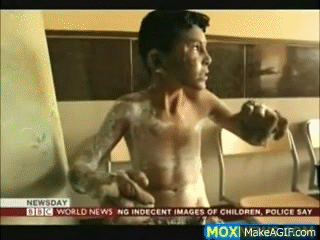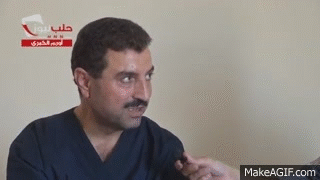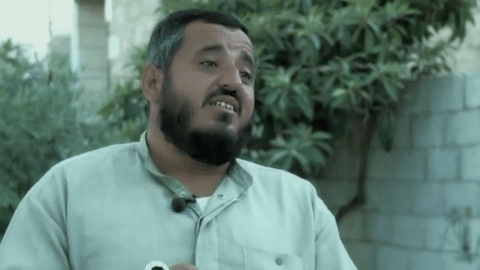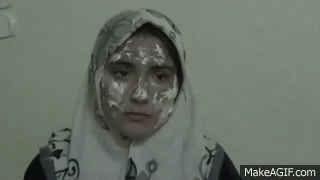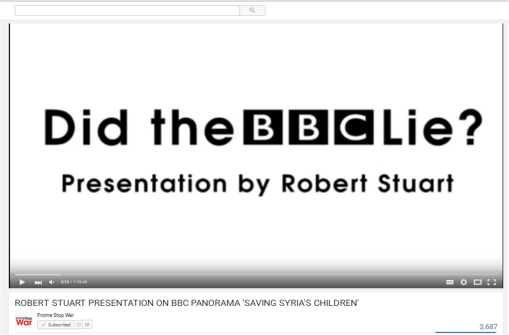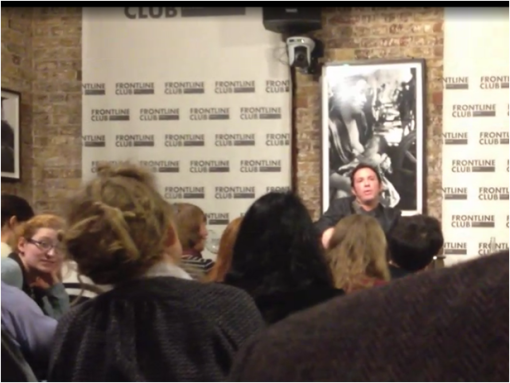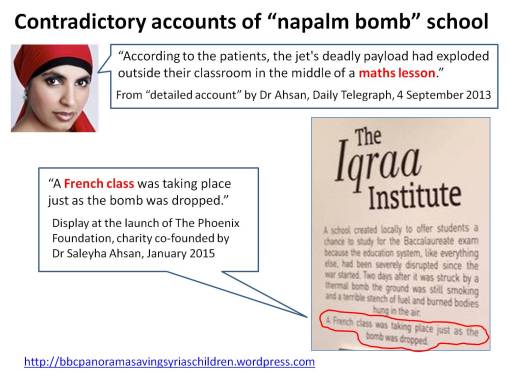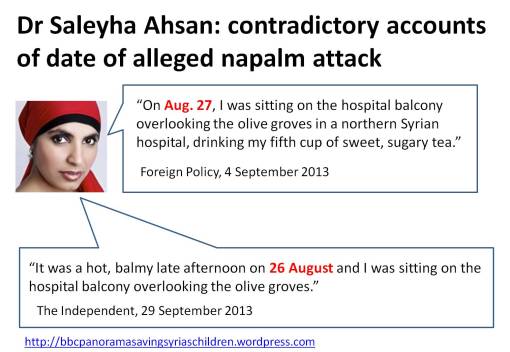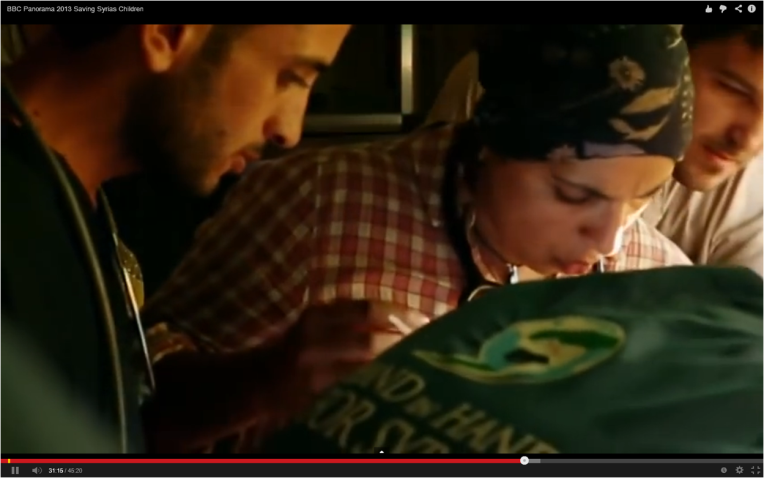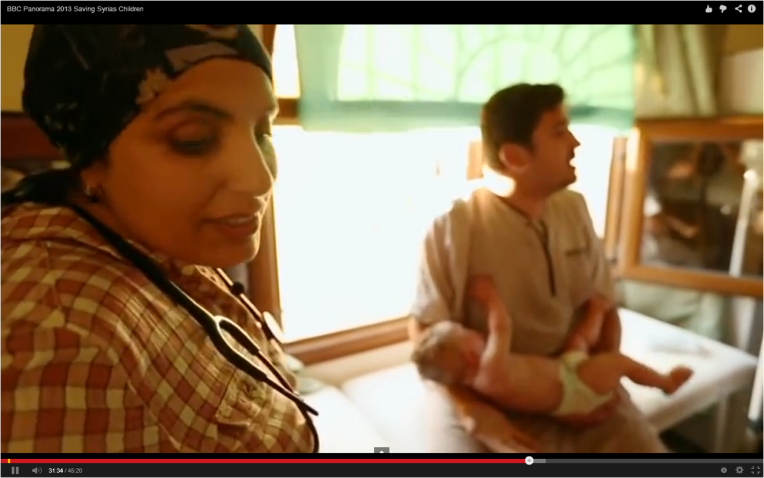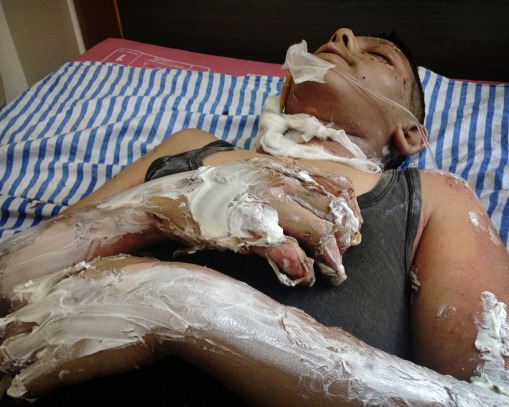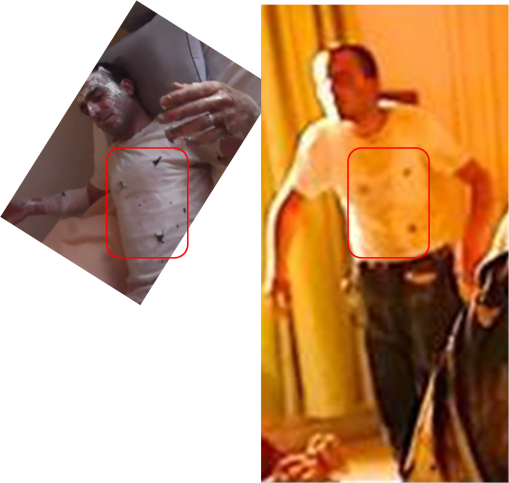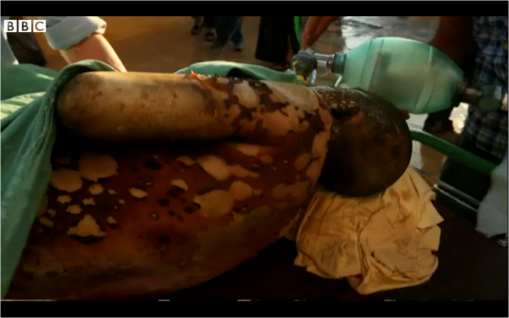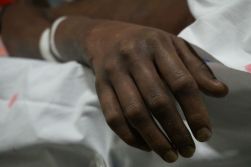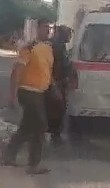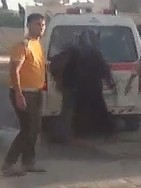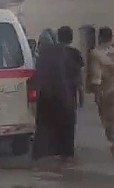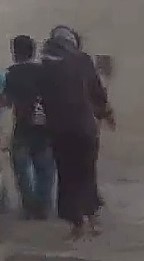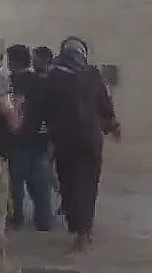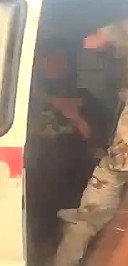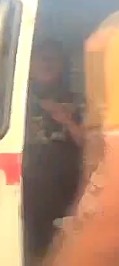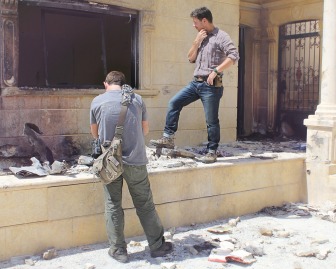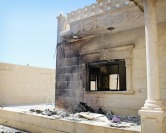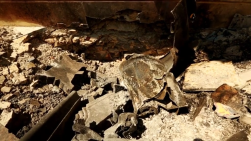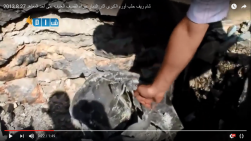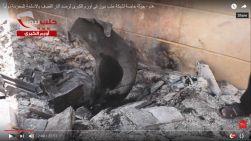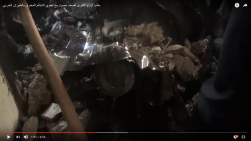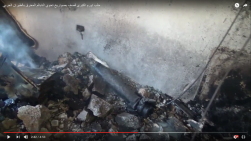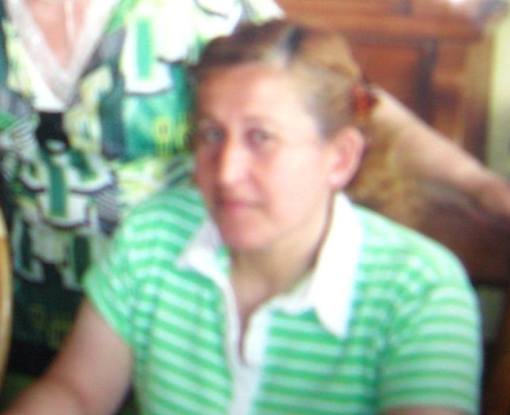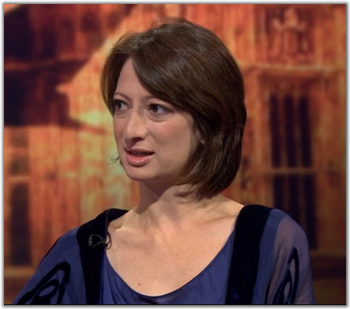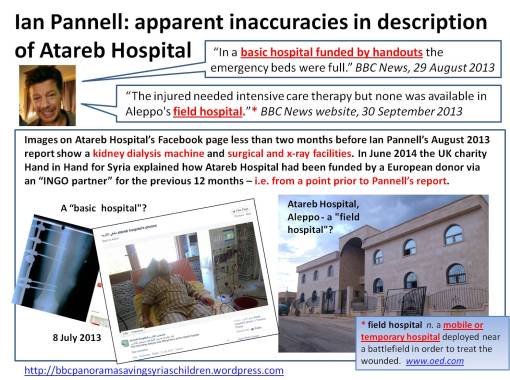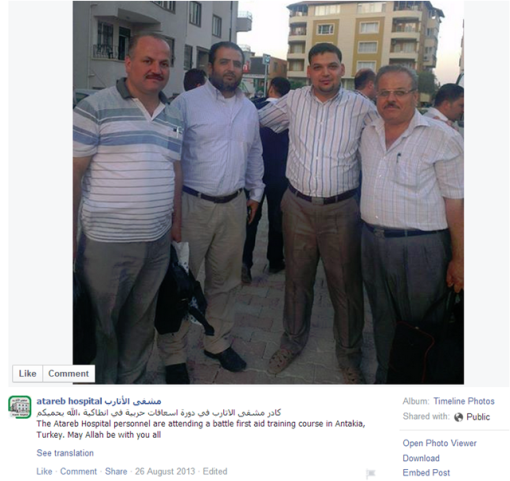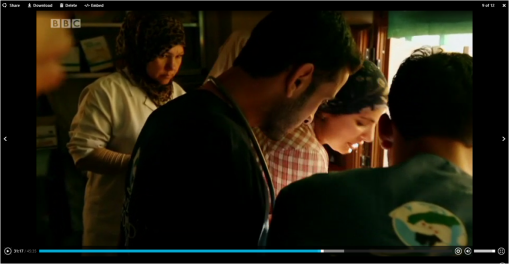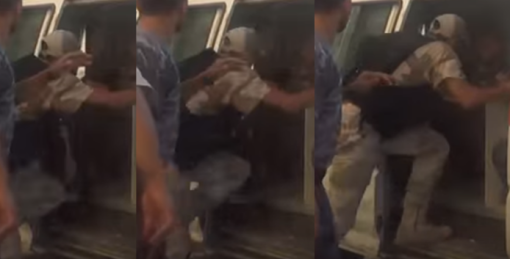Así se fabricaba una mentira, esta era y todavía llega en menos proporción las noticias desde SIRIA, para acusar al gobierno Sirio de estar matando a su pueblos, USA y sus aliados tienen un ejército de actores propios para fabricar estas estas mentiras se hacen con todos los países que invaden y esto es lo consumimos como verdad, todas las principales cadenas de info están metidas en este juego macabro:
El análisis del documental de 30 de septiembre de 2013 Panorama de la BBC 'Salvar a los niños de Siria' y noticias relacionadas BBC informa, afirmando que las secuencias filmadas por el personal de la BBC y otras personas en el Hospital Atareb, Alepo el 26 de agosto 2013 que pretende mostrar las consecuencias de un ataque con bomba incendiaria en una escuela en Urm Al-Kubra son en gran parte, si no totalmente, por etapas.
La fabricación de la BBC Panorama 'Salvar a los niños de Siria'
Analysis of the 30 September 2013 BBC Panorama documentary 'Saving Syria's Children' and related BBC News reports, contending that sequences filmed by BBC personnel and others at Atareb Hospital, Aleppo on 26 August 2013 purporting to show the aftermath of an incendiary bomb attack on a school in Urm Al-Kubra are largely, if not entirely, staged.
Syria crisis: Incendiary bomb victims ‘like the walking dead’ – Ten O’Clock News, BBC One, 29 August 2013 (03:02 – 03:19). Alleged casualties appear to begin writhing and moaning on cue of central figure. See Tableau of male alleged casualties.
Alleged victim Ahmed Darwish appears to nod in response to instruction before turning to address the camera.
Medic featured in BBC’s reports appears to demonstrate amusement in interview filmed the next day – see Laughing medic and The Napalm d’Or?.
Alleged eye witness Abu Youssef, interviewed in a video uploaded to You Tube less than a week after the alleged attack. Youssef’s words at this point have been translated as “The first bomb hit a residential area, the second one a student centre”. (See also Conflicting accounts of time of “napalm bomb” and The Napalm d’Or?).
Alleged napalm victim appears entirely unscathed – see Woman in black dress (end of article).
Alleged napalm victim (white t-shirt) appears to sway and lurch in bizarre manner in ‘Saving Syria’s Children’ – see Alleged teacher and The Napalm d’Or?.
Presentation for Frome Stop War, 1 March 2016.
Listed below are the original BBC reports referenced in this blog, including an HQ copy of Saving Syria’s Children (relevant section commences 30:38), plus independent reports and commentary.
Introduction
On 29 August 2013, as the UK House of Commons vote on possible military intervention in Syria was underway [1], BBC News at Ten broadcast a report by Ian Pannell and cameraman Darren Conway which claimed that a Syrian fighter jet had dropped an incendiary bomb containing a “napalm-type” substance – possibly thermite – on the playground of an Aleppo school.
The report contained harrowing scenes of teenage boys and young men, their skin apparently in tatters, racing into what the report describes as “a basic hospital funded by handouts” to be treated for burns. In one particularly disturbing scene (from 03:02 – 03:19) a tableau of young men writhe, drool and groan, seemingly in great distress.
On further viewings, however, this scene in particular is strikingly odd. The young men are initially quiet and static. The central figure (Mohammed Asi) looks directly into the camera for several moments before raising his arm, at which point the group instantly becomes animated and starts moaning in unison.
Asi begins to stagger and lurch; the boy in the black vest suddenly pitches onto his side, briefly looking up again in the same direction as the others before ultimately slumping onto his front; the boy in red (Anas Said Ali) raises his head and peers quizzically around, while the boy in the white shirt rises effortlessly to his feet before pulling up a chair. [2] As the camera pulls back a boy in a yellow ‘Super-9’ t-shirt (Lutfi Arsi) rises from an odd kneeling position, flailing his head and torso and rolling his eyes as a team of medics sweeps in. The medic to the right of screen immediately begins attending to Said Ali’s foot, without examining it. Some images from the sequence are reproduced below. [3]

Compare the demeanour of the young men above with that of Vietnam napalm bombing survivor Kim Phuc and these Egyptian victims of an Israeli napalm attack.
This scene and other questionable aspects of this brief report prompted my first letter to the BBC on 4 October 2013.
While I was completing this letter, on 30 September 2013, the BBC broadcast a follow-up news report shortly prior to the transmission of the Panorama special Saving Syria’s Children the same evening.
Comparing the 29 August and 30 September reports a discrepancy in the soundtrack was apparent. In the first, Dr Rola Hallam (her face covered by a mask) had referred to “napalm”, in the second she said “chemical weapon”. I commented on this in the PS to my letter. The audio editing was subsequently discussed by former UK ambassador and blogger Craig Murray here and here. [4] Speculation on this point has since been widespread (see for example here and here; my opinion is here). My concern remains on the evidence of wider fabrication in the hospital scenes.
The BBC’s initial response of 2 December 2013 dealt largely with the editing of Dr Rola Hallam’s words. My correspondence with the BBC has continued. Some of the main points which have arisen are as follows.
Date and time of the alleged incident
Fuller details here. See also this article on the website OffGuardian and Outbreak of journalism at the Frontline Club?
According to the BBC’s reports the alleged attack took place on Monday 26 August 2013. [5]
Accounts of the time of the alleged bombing span a range of six hours. A Human Rights Watch report states (p12) that the attack occurred “around midday”; the HRW report links to a further report by the Violations Documentation Center in Syria – a regularly cited BBC source -which claims (p4) the attack took place at 2.00pm and directly quotes activist Mustapha Haid as saying he first heard rumours of a “chemical attack” at “3 in the afternoon”. Haid then “immediately” went to Atareb Hospital to film the alleged victims.
‘Saving Syria’s Children’ reporter Ian Pannell categorically stated in BBC Complaints correspondence that the attack happened “at around 5.30pm at the end of the school day”. When questioned about the time of the incident, Pannell’s sole BBC colleague on the programme, cameraman, director and producer Darren Conway, responded “I would say it was around, I don’t know, between three and five, something like that”. It is unclear whether Conway was giving his assessment of when the alleged incendiary attack on the school in Urm al-Kubra (Urem Al-Kubra) took place or was referring to the subsequent arrival of alleged victims at Atareb Hospital several miles away, where he filmed them. Video of Conway’s interview at The Frontline Club, London, in which this apparent contradiction arose remains unpublished. The Frontline’s justification for this change in its usual policy appears unpersuasive.
Another alleged eyewitness claims the attack may have occurred as late as 6pm.
‘Saving Syria’s Children’ cameraman, director and producer Darren Conway at the Frontline Club, London on 15 October 2014, responding to a question about the time of the alleged incendiary bomb attack: “It was the end of the day, yeah, I mean I don’t remember the exact time… …I would say it was around, I don’t know, between three and five, something like that.” (Mobile phone footage http://1drv.ms/1DfBr2T). Conway’s sole BBC colleague on “Saving Syria’s Children”, reporter Ian Pannell, has stated that the alleged attack on the school in Urm Al-Kubra, some distance from Atareb Hospital where Conway filmed the alleged victims, occurred “at around 5.30pm at the end of the school day”.
The Demotix photographs
Fuller details here.
A series of eighteen photographs showing two alleged victims originally appeared on the photo journalism website Demotix dated 25 August 2013. Demotix later amended the date of the photographs to 26 August. When the images were dated 25 August, Ian Pannell denied that they featured victims from his report [6]; after the date had been changed, the BBC acknowledged that they did.
Update, 18 November 2015: oddly, the images are currently once more dated 25 August 2013 on the Demotix site – see this dated and timed screengrab.
Update: as of 22 January 2016 the Demotix images are being hostedon the website of Corbis Images and are once again dated 26 August 2013.
Update: On 2 May 2016 “the best Corbis imagery” was transferred to the website Getty Images. The images at issue here were not transferred to Getty, however screengrabs from the original Demotix posting (dated 25 August) are here and downloads of the full set are in the appendix at the bottom of this page.
Conflicting accounts of first victim and other discrepancies in accounts by Dr Saleyha Ahsan and Ian Pannell
See also Dr Saleyha Ahsan: contradictions in accounts of alleged incendiary bomb attack and Ian Pannell: contradictions in accounts of Aleppo school bomb attack
At 31 minutes in Saving Syria’s Children Dr Saleyha Ahsan is shown attending to the first alleged victim – a baby, accompanied by his father. Ian Pannell’s narration at this point states “no-one’s quite sure what’s happened.” Only subsequently do the “dozens” of other alleged victims begin to arrive. This sequence of events is portrayed in several other accounts, including others given by Dr Ahsan.
However in an interview with Australian broadcaster ABC on 27 November 2013 Dr Ahsan gives an entirely contradictory account (from 02:38):
“It was quite a quiet day and I was beginning to think ‘ooh gosh I’ve really got my timing wrong ‘cause what’s the point in me being here if I’m not going to be helping out?’ and then suddenly, standing to my left I just saw this rather strange vision I ju… I I felt as if I was having an out of body experience because I couldn’t quite work out what I was seeing, there was a boy, covered in this strange white dust, had wide staring eyes, his clothes were hanging off him, and he had this huge laceration on the side of his face, and his skin looked like it had areas of burn, and he was saying in a very calm voice ‘where shall I go okhty?’ which means sister in Arabic…”
In this version, the baby and his father do not feature at all. Instead Dr Ahsan states “it was quite a quiet day” prior to the arrival of the person she now claims was the first victim – a boy covered in “strange white dust”, who had a “huge laceration on the side of his face” and who spoke to her, asking her where he should go. This clear and vivid account is entirely irreconcilable with what viewers saw in ‘Saving Syria’s Children’.
On the website of the charity The Phoenix Foundation, launched in January 2015, Dr Ahsan writes:
The sound of an ambulance siren and then the screams first of all from a baby and then young girls – that I still hear as I write this – alerted me that something disastrous had happened.
Previous accounts make no mention of an ambulance siren heralding the baby’s arrival (including, most notably, Dr Ahsan’s “quiet day” ABC interview). Moreover, the reference to the screams of “young girls” immediately following those of the baby appears to contradict ‘Saving Syria’s Children’, in which the first alleged victims to arrive after the baby are adolescent males. In fact only one young female alleged victim (Siham Kanbari) appears in the entire Atareb hospital sequence. [7] [8]
These and a number of further inconsistencies between Dr Ahsan’s accounts of the alleged events of 26 August 2013, and between Dr Ahsan’s accounts and those of others present, have been compiled with full references here. A number of contradictions in accounts given by Ian Pannell are gathered here.
A further complaint (see here and here) regarding apparent breaches of the Geneva Convention by Dr Ahsan in Libya in 2011 has been lodged with the BBC and copied to Amnesty International’s Libya Team. A number of further claims regarding Dr Ahsan have been made in this October 2016 article by Moeen Raoof.
Grinning victim
This information was submitted to the BBC by email on 5 November 2014. Fuller details here. See also The Napalm d’Or?.
The image below is from a sequence originally transmitted in the BBC News report of 29 August 2013. [9] The slim boy in the black vest at the right of the picture, allegedly the victim of a “napalm-type substance”, is looking into the camera and grinning broadly.
The same boy appears at 31:56 in Saving Syria’s Children, apparently moments later, running into the hospital with his jeans lowered and again at 35:15 exclaiming “cover me” while allegedly being treated for his injuries by Dr Saleyha Ahsan. (See further images here).
If this boy’s injuries are not genuine then presumably those of the others arriving in the pick up truck with him – at least – are also fabricated. These include Mohammed Asi, of whom Ian Pannell has provided this image purporting to show him “two weeks after the attack in hospital in Turkey” and Anas Said Ali, whom the BBC claims died “a few days later in hospital in Turkey”. [10]
Alleged injuries of baby and his father
Fuller details here.
The baby featured from 31 minutes in ‘Saving Syria’s Children’ does not appear to have suffered “severe burns” as claimed in the narration, and certainly not the 80% burns (elsewhere “full-body burns”) claimed by Dr Hallam which, as the high percentage indicates, would cover the majority of the infant’s body. Rather, he appears unscathed and in no unusual degree of distress (click images below to enlarge).
The infant does not appear to have suffered “80%” or “full-body” burns as claimed by Dr Hallam
t 31:18 Dr Ahsan’s advises “this baby needs to be picked up” and the child is robustly handled by Dr Ahan and the supposed father. If the baby had suffered severe burns covering up to 80% of his body this would appear extremely inappropriate and reckless.Subsequent accounts of the infant’s injuries range from “nasty scolds [sic] on his legs” (Dr Ahsan) to Dr Hallam’s “80%”or “full-body” burns.
A BBC News article by Ian Pannell states that the baby’s father “was also burnt and sat helplessly on a stretcher clutching his son”. Dr Hallam states here (from 22:17) that the infant’s father “also had a burnt face” and here that he “had head burns”. However the supposed father (seen over Dr Ahsan’s left shoulder at 31:16 and again holding the baby at 31:31) is animated, vocal and appears unscathed. [11]
The baby’s alleged father (right), who according to Dr Hallam “also had a burnt face” http://bit.ly/1zcKgI3
The baby’s alleged father, speaking and gesturing animatedly to someone off-screen. According to Ian Pannell he “was also burnt and sat helplessly on a stretcher clutching his son”
Plausibility of injuries and demeanour of alleged victims
A GMC registered practicing doctor has offered this opinion of the alleged injuries presented in ‘Saving Syria’s Children’:
I have watched the panorama BBC documentary. Makes for interesting viewing but I think the scene of the school children coming in with the burns was an act.
I worked on trauma and orthopaedics last year for four months, so I have worked with burns victims first hand. These victims displayed what appeared to be “less painful” burns. They were able to sit down, be touched by others even talk. This is not how a severe burn victim would present. Most victims:
would be screaming the place down in agony. Even after treatment and with all sorts of pain drugs they still hurt and still scream.
Many burns victims cannot even focus enough to follow instructions such as sit down and wait because of pain. This young boy, I found very odd (I don’t think it is cultural thing as pain is pain and it can drive a person mad).
would have difficulties with their airways, almost immidiatley, hence in the UK many are intubated and treated in ITU. This shows them able to speak and breathing very well no obvious signs of respiratory distress like coughing, shallow breathing etc. In such an attack the poisons are inhaled.
They say they douse them in water (wouldn’t the high spray of the hose cause more problems to burnt skin).
when they came to the hospital they have evidence of this white powder on their skin but not evident burn blisters which fill with fluid with in minutes. Some are shown with skin hanging off but the flesh beneath is not that convincing it actually looks like more skin.
The walk is very odd. why??
The other concern in burns is their fluid status as they will be losing large amounts of fluid through their burns. The cannula is essential to resuscitate them. Im not sure what A and E that doctor worked in but I have not worked in A and e this year and I have placed I think almost 6 cannulas in peoples feet. [12] Any access is essential in burns, a standard training skill!
If the poison was dropped from above (a plane) their hair would have been lost and patches would be evident. Many still had a full heads.
Alleged victim Ahmed Darwish http://bit.ly/1KGzVeK (click to enlarge)
Ahmed Darwish appears to await instruction before turning to address the camera
Alleged victim Lutfi Arsi http://bit.ly/1FiYu3k. A doctor comments: “Some are shown with skin hanging off but the flesh beneath is not that convincing it actually looks like more skin” (click to enlarge)
Alleged victim featured in ‘Saving Syria’s Children’. (Image from website of The Phoenix Foundation, charity established by Dr Saleyha Ahsan and others in January 2015 http://www.thephoenixfoundation.org.uk/about/phoenix-foundation-goals/)
The doctor’s opinion is congruent with that of former UK ambassador Craig Murray who, in a 31 March 2014 email regarding the nomination of Ian Pannell and the “Chemical School Attack” report for One World Media awards, wrote: “having personally been in my career in rather similar conflict situations, I was struck by the strange absence of panic and screaming both by patients and surrounding family – I have seen people in that sort of pain and situation and they are not that quiet and stoic, in any culture.”
Most of the alleged victims presented in ‘Saving Syria’s Children’ are notably calm and quiet. Some mill around in the hospital and its yard.
Lutfi Arsi mills around the hospital courtyard at 32:29 in Saving Syria’s Children
From 33:05 – 33:46 Lutfi Arsi (in the yellow ‘Super 9’ t-shirt) calmly inspects his fellow alleged victims, helpfully directs a member of staff towards them, ambles to the back of the room, pulls up a chair and takes a seat.
In the same sequence note the exaggerated swaying and lurching of the man in the white t-shirt at the back of the room; identifiable by the three black marks on his t-shirt, this is the supposed teacher who some time later (judging by the addition of bandages to his arm) provides a relaxed and cogent interview, partially translated here. (See images below) [13]
At 36:52 Anas Said Ali speaks, incongruously, in English (“I’m so bad, so bad”) .
Alleged victim Anas Said Ali, allegedly being treated for incendiary bomb burns, speaks in English (“I’m so bad, so bad”) at 36:53 in Saving Syria’s Children.
The “victims” presented in ‘Saving Syria’s Children’ appear to have retained their eyebrows, despite white cream suggesting treatment for facial burns. Note in particular the undamaged eyebrows of the alleged teacher in footage shot on the day of the attack and those of Siham Kanbari “a few weeks after the attacks in hospital”.
Alleged teacher. Note undamaged eyebrows.
Alleged victim Siham Kanbari “a few weeks after the attack in hospital in Turkey”. (Saving Syria’s Children, 43 minutes). Despite the shocking appearance of her eyes and much of her face, her eyebrows are in pristine condition. See section on HOSPEX injury simulation techniques below.
Compare the injuries and demeanour of the alleged victims presented in Saving Syria’s Children with footage of Vietnamese and Egyptian napalm victims.
In her decision of 26 September 2014 the BBC Senior Editorial Complaints Adviser cites the opinion of a “consultant plastic surgeon with training and experience in the presentation, prognosis and outcome of traumatic burns injuries”. This opinion does not explicitly take into account the possible use of sophisticated injury simulation programmes such as HOSPEX, discussed immediately below.
 Alleged teacher (note white t-shirt with black marks) swaying and lurching bizarrely from 33:38 to 33:46 in ‘Saving Syria’s Children prior to giving relaxed and cogent interview (see further images below and http://bit.ly/1FcaK3Q).
Alleged teacher (note white t-shirt with black marks) swaying and lurching bizarrely from 33:38 to 33:46 in ‘Saving Syria’s Children prior to giving relaxed and cogent interview (see further images below and http://bit.ly/1FcaK3Q).
Alleged teacher interviewed here https://www.youtube.com/watch?v=FIybfXUFvdk. Black marks on t-shirt identify him as the bizarrely swaying figure seen from 33:38 to 33:46 in ‘Saving Syria’s Children’ (see clip above).
HOSPEX injury simulation techniques
Fuller details here. See also this section of my March 2016 presentation for Frome Stop War and this blog post
In a BBC Newsnight report of 11 August 2014 Dr Saleyha Ahsan, one of the two British doctors featured in ‘Saving Syria’s Children’, described “how British Army medical services prepare for deployment using HOSPEX” (Hospital Exercises), a “macro-simulation replicating exactly the conditions medics will face in the field”. Dr Ahsan states:
“The principle behind ‘macro simulation’ is that it’s as close to reality as possible. Actors and make-up artists mimic even the most severe of injuries”.
The level of expertise in fabricating injuries and emergency situations demonstrated in this report would appear to be more than adequate to account for the hospital scenes in Saving Syria’s Children. In the report Dr Ahsan states that the officer in charge of the operation, Brigadier Kevin Beaton, was her squadron commander in Bosnia and inspired her to study medicine.
Compare the first image below, featuring a “simulated burns casualty played by a professional actor” and published in an article about the Army Medical Services Training Centre (AMSTC) near York, where HOSPEX exercises are held, with the subsequent image of Victim X from the BBC Ten O’Clock News report of 29 August 2013:
Above: image and caption from 2008 Army Medic article about the AMSTC facility near York
‘Victim X’ from BBC Ten O’Clock News 29 August 2013
The company which provided the highly sophisticated injury simulations featured in the Newsnight report is Trauma FX, which proudly claims to be “UK’s leading provider of realistic casualty simulation”.
Post on TraumaFX’s Facebook page, 12 August 2014. The post has subsequently been deleted: https://www.facebook.com/TraumaFXUK/posts/431784723629501. The simulated foot injuries are described in the report as “degloving”, a type of injury presented by several of the alleged victims in Saving Syria’s Children.
Alleged “degloving ” injuries in ‘Saving Syria’s Children’.
TraumaFX’s website states that it “support(s) various military forces internationally” and “can easily travel international as we are a mobile team and can work in any location”. The company has over 10 years’ experience of supporting UK military training exercises.
In addition to providing clients with “Casualty Role Play Actors & Amputee Actors” and “SIMWOUNDS” (“practical, realistic” wound effects), TraumaFX is specialist “in simulating CBRN [Chemical, Biological, Radiological and Nuclear] injuries and conditions”.
The company, which is based in Thirsk, North Yorkshire – just over 20 miles from the Army Medical Services Training Centre (AMSTC) at Strensall, near York, where HOSPEX exercises are conducted – also creates “SIMBODIES” – “life like dead bodies and body parts designed and produced to appear extremely realistic, heavily weighted and ideal for use in CSI, disaster victim identification and mortuary training exercises.”
Some of the highly realistic “SIMBODIES” and body parts created by TraumaFX
Further examples of Trauma FX’s impressive work can be viewed on the company’s Facebook page.
As noted below it may be significant that Atareb hospital staff were attending a battle first aid training course in Turkey on the date of the alleged napalm bomb attack.
Unidentified western male filmed at Atareb hospital
A western male in a grey shirt and spectacles appears at 2:06 in the BBC News report of 30 September 2013. He is carrying a camera and ducks out of sight as he realises that he is in shot with the BBC’s interview with Dr Rola Hallam. Elsewhere in the BBC’s footage he can be seen communicating by walky-talky.

The presence of this person is perplexing, as at no point in its correspondence has the BBC suggested that the Panorama crew in Syria at that time consisted of anyone other than reporter Ian Pannell, cameraman/producer Darren Conway and fixer/translator Mughira Al Sharif, plus presumably local drivers/minders.
In an appeal review request of 28 December 2014 another complainant directly asked the BBC to identify the man in the images below. In its rejection of this request the BBC Trust’s Editorial Standards Committee ignored this question, along with several other potentially significant points.
Update: The editor of Panorama ‘Saving Syria’s Children’, Tom Giles, has commented here.
Second unidentified European at Atareb Hospital
Fuller details here.
At 21 seconds in the below You Tube video (higher quality source copy here) shot outside Atareb Hospital, Aleppo on 26 August 2013 a white male can be glimpsed snatching a piece of patterned fabric from the back of a pickup truck. Moments later a hand – perhaps belonging to the same man – is seen flicking a dark sheet over an unseen object in the truck.
The man appears to be European, is wearing a microphone headset and seems to be in military garb:
The presence of a militarily attired westerner at the Aleppo hospital to which alleged victims of the alleged Urm al-Kubra napalm attack were transported would appear highly incongruous.
Woman in black dress
Further details here. See also “Napalm bomb” school located.
From 2:38 to 2:44 in Ian Pannell and Darren Conway’s BBC Ten O’Clock News report of 29 August 2013 a group of four people, including a woman in a black dress with a distinctive gold flower pattern, rushes through Atareb Hospital gate, interrupting an interview with Dr Rola Hallam.
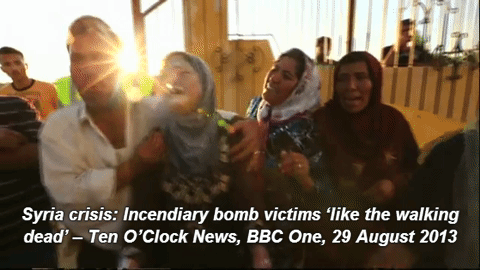 Darren Conway’s footage featuring a woman in a distinctive black dress, also shown in Saving Syria’s Children (36 minutes).
Darren Conway’s footage featuring a woman in a distinctive black dress, also shown in Saving Syria’s Children (36 minutes).
A longer version of the sequence appears at 36 minutes in Saving Syria’s Children, immediately followed by a brief “flashback” shot of the woman’s arrival at Atareb Hospital, in which she is seen being stretchered on a mattress out of the back of an ambulance by five men, apparently screaming in agony.
In marked contrast to her apparent condition upon arrival , video footage shot at Urm al-Kubra on the day of the alleged incendiary attack shows the woman walking calmly and unaided towards the ambulance (Video A, 7 – 12s). After presumably entering via the two steps at the vehicle’s side entrance, she then appears seated upright (Video B, 7 – 11s) as she embarks upon the short (approximately 13 km) journey to Atareb Hospital, where she was filmed by Conway.

The woman in the black and gold dress, who was presented as an incendiary bomb victim in the BBC News report of 29 August 2013, walks towards ambulance calmly and unaided, prior to taking an upright seat.
Enlargements from the same sequence
There can be no doubt that Video A and Video B both relate to the same alleged events reported by the BBC and that the woman entering the ambulance in Video A is the same person who is carried out of it in the BBC’s footage.
Video A was posted on 26 August 2013, the day of the alleged attack; Video B was posted two days later. Scrutiny of the ambulance in Videos A and B makes it clear that it is the same one filmed by Conway. Moreover, the two military figures who accompany the woman into the ambulance are clearly identifiable as being present in the BBC’s footage [14] [15]:
(Left) Man in combat fatigues with rolled up sleeves and trousers accompanies woman in black dress into ambulance at 9s in Video A; (Right) Same man, identifiable by camouflage pattern on clothing, helps to carry the woman out of the ambulance upon her arrival at Atareb Hospital at 36:39 in Saving Syria’s Children.
(Left) Man in combat fatigues, cap, dark body vest and carrying weapon boards ambulance at 8s in Video B and at 40s in Video A; (Right) Same man assists in carrying woman from ambulance at 36:43 in Saving Syria’s Children.
Both men board the ambulance on its right side; both are initially in the rear with the woman in the black dress before the man with rolled up sleeves and trousers climbs out and gets into the front passenger seat (Video A, 36s). Upon arrival at Atareb Hospital both men exit the ambulance on its right hand side and both assist in carrying the woman in the black dress out through the tailgate.
 Video B, 11s
Video B, 11s Saving Syria’s Children 36:34
Saving Syria’s Children 36:34
Munitions allegedly used in the attack
See also “Napalm bomb” school located
In his original BBC News report of 29 August 2013 Ian Pannell stated:
We don’t know for sure what was in the bomb, but the injuries and debris suggests something like napalm or thermite.
Dr Saleyha Ahsan, one of the British medics featured in Saving Syria’s Children, has written:
Peter Bouckaert, of Human Rights Watch, believes the weapon was a ZAB incendiary device. It contains a jellied fuel which “adheres to the skin increasing the level of injury … it’s a nasty weapon.”
The Daily Mail cites a report in which Mary Wareham of the arms division of Human Rights Watch indicates:
the bomb weighed 1,100lbs and contained a fuel similar to napalm.
Posts on The Syrian Archive refer to a “phosphine chemical attack” while captions beneath images taken by photographer Amer Alfaj relate “opposition” claims of “Napalm and White Phosphorous”.
Below are a number of images from the two alleged incendiary attack locations, taken from several videos and still images. Some readers may be better placed than I to assess which, if any, of the above claims are consistent with the munitions remnants pictured.
Note that in Video D – uploaded to You Tube a day after the alleged incendiary attack – the munition casing is handled freely (see first gallery below) and that in Video A – apparently shot on the day of the attack itself – one of those present has no qualms about standing on a munition casing in his bare feet (see second gallery below).
Images of munition remnants at the school, variously from Video C, Video D, Saving Syria’s Children (41:33) and photographs taken by Dr Saleyha Ahsan and posted on The Phoenix Foundation website.
Images of munition remnants at bombed building, Video A.
FSA commander attests attack did not take place
This information was submitted to the BBC on 13 October 2014.
A team of Syrian investigators which has been researching the alleged attack has been in contact with a former commander of the Al-Tawhid Brigade who was based in Aleppo province in August 2013 and who was in close contact with events in Urm Al-Kubra. The team has provided me with the commander’s name.
The commander attests that the “napalm bomb” story is untrue and that none of the events depicted by the BBC occurred. He has provided this brief declaration (his voice is disguised) which the lead investigator has transcribed as follows:
We the fighters of the Free Syrian Army in the North West areas of the City of Aleppo we declare that we were present in this region in August 2013 and we did not meet any air strike with the substance of Napalm on Urum al Kubra or on any other region in the North West Aleppo countryside and we deny the cheap fabrication of the BBC and of the stations that imitate her because it undermine the credibility of the Free Syrian Army. Saying this we do not hesitate to criminalize the criminal acts of the Assad regime and its murderous extermination of its people. And we have done a field investigation with the help of the delegate of the Free Syrian Red Crescent and this has conducted us to confirm what we are saying : no victims, no traces and no memory with anybody of the alleged air strikes with the substance of Napalm.
The commander has agreed to provide a full statement to the BBC providing that his identity is protected. He is also willing to testify publicly under appropriate international protections. The commander, who is now attached to another faction allied to the Free Syrian Army, has offered to provide BBC journalists with safe transit from Antakya, Turkey to Urm Al-Kubra to interview witnesses assembled by the Syrian team and to conduct their own investigation.
A July 2014 telephone conversation between two members of the Syrian investigative team, transcribed here, provides an account from a local resident who also affirms that the alleged napalm bomb attack did not occur.
Identification of participant in hospital footage
This information was submitted to the BBC on 2 September 2014 and 13 October 2014. Fuller details here. See also Have journos (and filmmakers) passed up the Beatles of all scoops?.
A 51 year old Dutch-Armenian woman (first two images below) contacted me through Facebook in June 2014 to request that I remove a screengrab from ‘Saving Syria’s Children’ which I had posted on the site, claiming that she was in it and that she did not wish others to see it.
Although the woman was not featured in the particular image I had posted, I interpreted her words as possibly meaning she had been photographed or filmed at Atareb hospital on 26 August 2013, the day of the alleged attack. The woman did not respond to my requests for clarification. The woman’s Facebook page reveals that in 2012 she travelled between Syria and the Netherlands, where she resides. There is a gap in her Facebook posts in the weeks around 26 August 2013.
Some weeks after she had contacted me I came across this You Tube video shot at Atareb hospital on 26 August 2013 in which at 20:36 a woman is briefly seen having white cream applied to her face and hands (third image below). The resemblance between this person and the woman who contacted me is extremely striking.
Update, April 2016: Further images of the woman who contacted me are currently viewable on the Facebook account of one of her relatives. Two are reproduced below. The first is dated 10 January 2015 and tagged “in Netherlands”. The second is dated 22 October 2014 but appears to have been taken some years earlier. I have cropped the woman’s relative out of both images.
Compare with the woman from the You Tube video.
Posted on Facebook 10 January 2015, tagged “in Netherlands”
Posted on Facebook 22 October 2014, although likely taken some years previously.
Comparison of Dutch-Armenian woman who contacted me on Facebook expressing anxiety at being identified in Atareb Hospital footage and alleged victim filmed at Atareb Hospital on 26 August 2013.
Dr Rola Hallam and Hand in Hand for Syria
Dr Rola Hallam, who features throughout Saving Syria’s Children, is described as “a British doctor visiting for the charity Hand in Hand for Syria”.
Dr Rola Hallam in ‘Saving Syria’s Children’
Dr Rola Hallam, Newsnight, BBC2, 30 August 2013 (‘Syria crisis: Doctor criticises Miliband over MPs’ vote’ http://www.bbc.co.uk/news/uk-politics-23909554)
On 30 August 2013, the day after the first BBC report on the alleged attack, Dr Hallam appeared on Newsnight expressing her disappointment at parliament’s rejection of a military strike against Syria.
Dr Hallam’s father is Dr. Mousa al-Kurdi. [16] According to a February 2013 article written Dr Hallam’s colleague, Dr Saleyha Ahsan, Dr al-Kurdi is “involved politically with the Syrian National Council”. In an Al Jazeera interview Dr al-Kurdi passionately advocates for the Syrian National Council’s recognition as the “sole representative” of all Syrians and relates how, following his address to the Friends of Syria summit in Istanbul in 2012 (attended by Hillary Clinton), he told Turkish Foreign Minister Ahmet Davutoğlu “You’re not doing enough” and demanded of Professor Davutoğlu and several other foreign ministers, including Victoria Nuland of the US State Department, “either you defend us or you arm the Syrian Free Army to defend us – you have the choice”.
At a Save the Children event in November 2013 Dr Hallam stated that her father “is certainly not a member of the Syrian National Council; he is a gynaecologist, who like most Syrians has taken an interest in what’s happening in his country”.
Dr Hallam is a member of the charity Hand in Hand for Syria’s executive team. Hand in Hand’s original three-star logo is plainly based on the flag adopted by the Free Syrian Army and the Syrian National Council. In 2014 the charity removed the stars from its logo.
 Original logo of Hand in Hand for Syria displaying the three stars of the Free Syrian Army/Syrian National Council emblem
Original logo of Hand in Hand for Syria displaying the three stars of the Free Syrian Army/Syrian National Council emblem Revised version, 2014
Revised version, 2014
The UK Charity Commission’s website states that Hand in Hand for Syria exists for “the advancement of health or saving lives”. Until July 2014 the Facebook banner of Hand in Hand’s co-founder, Faddy Sahloul, read WE WILL BRING ASSAD TO JUSTICE; NO MATTER WHAT LIVES IT TAKES, NO MATTER HOW MUCH CATASTROPHE IT MAKES. Mr Sahloul’s bloodthirsty sentiments were “liked” on Facebook by Hand in Hand’s other co-founder, Fadi Al-Dairi. Mr Sahloul and Mr Al-Dairi are listed as Trustees of Hand in Hand for Syria on the Charity Commission website. The image was removed shortly after it was commented on publicly.
The Facebook banner of Hand in Hand for Syria founder Faddy Sahloul, deleted July 2014
Mr Sahloul’s bloodthirsty slogan was “liked” by his fellow Hand in Hand for Syria co-founder and trustee Fadi Al-Dairi
A nurse seen treating the alleged incendiary bomb victims alongside Drs Rola Hallam and Saleyha Ahsan in ‘Saving Syria’s Children’ was subsequently photographed at Atareb Hospital wearing a Hand in Hand for Syria tunic and ostensibly tending to the injuries of a child “rebel” combatant. The web article which hosts the photograph overtly celebrates the fifteen year old’s supposed battle prowess. (See footnote [11], as well as here and here for further details).
A nurse wearing a Hand in Hand for Syria tunic (the word “Hand” is visible upon enlarging the image) appears to treat a child combatant. The text accompanying the image on this site explicitly celebrates the child’s military prowess: http://slnnews.co/?p=2578
The word “HAND” is visible on the nurse’s tunic.
The same nurse (centre) appeared alongside Hand in Hand for Syria executive Dr Rola Hallam (left) and former British Army captain, freelance filmmaker, BBC presenter and Hand in Hand for Syria volunteer Dr Saleyha Ahsan (right) in scenes filmed at Hand in Hand for Syria’s Atareb Hospital in Aleppo and broadcast in the 2013 BBC Panorama special ‘Saving Syria’s Children’.
Nurse who was subsequently photographed apparently treating a child combatant appears alongside Dr Saleyha Ahsan in ‘Saving Syria’s Children’
In September 2015 I formally raised a number of the above concerns with the Charity Commission. The Commission found that Hand in Hand’s use of the Syrian opposition flag as its logo and its co-founder Faddy Sahloul’s posting on Facebook of “a political statement that potentially promoted violence against the Assad regime” were “historical issues that have since been addressed by the trustees”. The images of the Hand in Hand nurse apparently treating a child fighter were not considered “sufficient verifiable evidence to substantiate… …concerns” that Hand in Hand for Syria “is celebrating or supporting violence”.
In March 2016 I submitted a further complaint including the below images of Atareb Hospital employee Iessa Obied (brother of Atareb Hospital’s Medical Director Abdulrahman Obied) posing with a shocking array of armaments; in some of the images Obied can be seen wearing a Hand in Hand for Syria tunic. The Commission found that these images “do not raise sufficient regulatory concern“. Other images on social media show Obied associating with an employee of another Syrian hospital (Bab al-Hawa) who was photographed attending the preparation and launching of a “Hell cannon” improvised mortar.

Hand in Hand for Syria executive Dr Rola Hallam was filmed alongside Abdulrahman Obied (2nd row, green tunic) in the 2013 Panorama special Saving Syria’s Children. Abdulrahman, who has described himself as Medical Director of Hand in Hand’s “flagship medical facility”, Atareb Hospital, Aleppo, is the brother of Iessa Obied, images of whom posing with an array of weapons were submitted to the Charity Commission. The Commission’s finding is reproduced here: https://bbcpanoramasavingsyriaschildren.wordpress.com/2016/06/11/charity-commission-images-of-hand-in-hand-for-syria-worker-brandishing-weapons-do-not-raise-sufficient-regulatory-concern/
In the course of my correspondence with the BBC regarding ‘Saving Syria’s Children’, the Director of the BBC’s Editorial Complaints Unit, Colin Tregear, stated (my italics):
“I think it was implicit that the charity was working in an area of Syria controlled by the opposition and would therefore be likely to share its aims and objectives (as opposed to supporting the Syrian government).” BBC Editorial Complaints Unit Provisional Finding, 23 April 2014 (see p10 of download).
Further information and correspondence with Charity Commission re: Hand in Hand for Syria:
UK charity which shares Syrian opposition “aims and objectives” benefits from Alan Kurdi tragedy – 9 September 2015
Concerns about Hand in Hand for Syria raised with Charity Commission – 16 September 2015
Charity Commission: opposition logo and murderous slogan are “historical issues” for Syria charity – 7 February 2016
Charity Commission: images of Hand in Hand for Syria worker brandishing weapons “do not raise sufficient regulatory concern” – 11 June 2016
Regulator rejects complaint about ‘charity worker’ who allegedly posed with weapons (report by UK voluntary sector journal Third Sector) – 14 June 2016
Hand in Hand for Syria attempts to distance itself from worker who posed with weapons – 18 July 2016
Further questions about the financial affairs and political affiliations of Hand in Hand for Syria have been raised in this dossier compiled by peace activist Dr Declan Hayes. Two You Tube videos: Inside the BBC’s Uprising: Hand in Hand for Propaganda and WANTED: Evidence Hand in Hand for Syria is Really in the Business of Saving Lives also pose questions about Hand in Hand for Syria’s ethics and motivations.
Atareb: “a basic hospital funded by handouts”
In June 2014 Hand in Hand for Syria launched a fundraising campaign which identified the hospital featured in ‘Saving Syria’s Children’ as Atareb Hospital, Aleppo.
A campaign page dated 10 June 2014 (since deleted) on Hand in Hand for Syria’s website stated that Atareb Hospital opened in May 2013 as a small A&E unit and that (my italics):
“The hospital’s funding comes from a European donor which supports global emergency response. This funding reaches Hand in Hand for Syria via an INGO partner. Although that funding is still very much in place, after one year our agreement with our INGO partner has come to an end – and the funding has to come through a partner.”
This makes clear that funding for Atareb Hospital – “from a European donor”, “via an INGO partner” – was secured prior to Ian Pannell’s description (03:17) of it as “a basic hospital funded by handouts”. [17] Indeed, images on the Atareb Facebook page posted before 26 August 2013, the day of the “napalm bomb”, depict a relatively well-equipped facility, including a kidney dialysis machine and surgical and x-ray facilities. (Please note there are some highly distressing images on the Atareb Facebook page).
The campaign page states that Atareb “now offers 68 beds and a wide range of services – from maternity and neo-natal facilities to many outpatient departments, three excellent operating theatres and a laboratory”. Elsewhere, Atareb is described as “One of the country’s most sophisticated remaining hospitals” with operating costs, according to Dr Hallam, of “between $60,000 and $70,000 a month”. Atareb’s current facilities are further indicated in the campaign materials.
The Syrian team investigating the alleged attack has produced this report which provides further information on the connections between Hand in Hand for Syria and Atareb Hospital, which the report claims “is facing very serious problems of administration, honesty, transparency and professionalism.” [18]
Post on Atareb Hospital’s Facebook page showing a new dialysis machine in use over one month prior to Ian Pannell’s description of Atareb as “a basic hospital funded by handouts”.
Regular Atareb Hospital staff absent on day of alleged attack
A post on Atareb Hospital’s Facebook page shows that on 26 August 2013, the date of the alleged attack, hospital staff were “attending a battle first aid training course in Antakia, Turkey”. This may indicate that some of the medics filmed by the Panorama team were not regular Atareb staff members.
Second from right is Atareb Hospital surgeon Abdulrahman Obied. Several more images of Dr Obied and his colleagues in Turkey on 26 August 2013 are viewable on his Facebook account http://on.fb.me/1TpSPes
Violations Documentation Center in Syria
A report by the Violations Documentation Center in Syria (a regularly cited BBC source) links to a list of 41 alleged victims of the attack. Several of the names are identifiable as those ascribed to individuals featured in ‘Saving Syria’s Children’, however their date of death in all cases is given as 26 August 2013.
While this reflects the Panorama account in respect of Lutfi Arsi (Loutfee Asee on the list), whom the BBC claims “died on his way to hospital in Turkey”, it contradicts it in respect of Anas Sayyed Ali (Anas al-Sayed Ali), whom the BBC claims “died a few days later in hospital in Turkey” and whom Dr Ahsan states (p15) died “two weeks later”; Ahmed Darwish (Ahmad Darwish), who was filmed by Panorama “a few weeks after the attack in hospital in Turkey”; Siham Kanbari (Siham Qandaree), also filmed later in the same hospital and whom Dr Ahsan has stated died on 20 October [19]; and Mohammed Asi (Muhammad Assi) who is pictured in an image provided by BBC Audience Services “two weeks after the attack in hospital in Turkey”.
The list omits Mohammed Kenas who according to Panorama “died on the way to hospital in Turkey”. [20]
The list includes a Muhammad Abdullatif, age 15. Mohammed Abdullatif is the name of the adult eyewitness who appears in the 29 August 2013 BBC News report (02:54) and in this non-BBC footage of the same “interview”.
Videos on the ‘Free Halab’ blog
The collection of videos of the alleged events of 26 August 2013 assembled by the “Free Halab” blog poses further questions as to the veracity of the BBC’s account.
For example, the opposition fighter speaking in this film [21] shot at Atareb Hospital on the day of the alleged incident, refers to “seven martyrs and about 50 wounded from the religious college for women and girls”. [22] This contradicts the BBC’s account in which the majority of student victims are seen to be adolescent males. [23]
A number of videos from Atareb Hospital on 26 August 2013 are also compiled here.
This fighter in a video from Atareb Hospital on the day of the alleged attack refers to “seven martyrs and about 50 wounded from the religious college for women and girls”. Most alleged victims filmed by the BBC are adolescent or older males. http://1drv.ms/1CvSEox
Misleading and manipulative editing
The hospital scenes in ‘Saving Syria’s Children’ and associated BBC News reports are extensively and misleadingly edited. Some examples are:
At 02:08 in the 29 August 2013 BBC News report Mohammed Asi is shown climbing down from a truck, accompanied by Dr Ahsan’s words “more coming? More? More?” However Asi had already been shown walking into the hospital from 01:44.
At 34:08 in ‘Saving Syria’s Children’ the narration states “within minutes the hospital is overwhelmed” over footage of Lutfi Arsi being carried into the hospital. However this is Arsi’s third appearance in the programme, having previously been seen at 32:26 and from 33:05 – 33:44.
Victim X is shown arriving in the hospital yard at 35:35 in ‘Saving Syria’s Children’, heralded by Dr Ahsan’s words “I think there’s more coming, I think there’s more coming”, despite his having previously seen being “treated” inside the hospital from 34:36 – 34:55.
A woman exclaims “yama yama yama” as she enters the hospital at 34:02; the same audio clip is also used over footage of Victim Y entering the hospital at 31:44.
On 23 April 2014 BBC Complaints Director Colin Tregear wrote:
…the programme-makers felt they were justified in using footage out of chronological order “to show the mayhem and the mood of what was happening around”. I am satisfied that the editing would not have affected the audience’s overall impression of what took place.
Victim who “fought to be allowed into hospital” had already been treated
In a contemporary BBC World Service report Ian Pannell states (at 3:06) “Fathers and mothers, desperate for help, fought to be allowed into the hospital, cursing their president Bashar al-Assad”.
However the cries and rants heard at this point are those of the alleged father and mother of the woman in the black dress seen at 2:37 in the BBC Ten O’Clock News report of 29 August 2013 (compare audio).
On 23 April 2014 the BBC explained (pp 6 & 7) that in this sequence the woman had already been treated inside the hospital with white burns cream. She then “went back outside” (to be evacuated to a Turkish or border hospital according to Dr Saleyha Ahsan) prior to rushing back through the hospital gate (at 36 minutes in Saving Syria’s Children) with her family to declaim Assad to the BBC camera.
To say that the family was at this point fighting “to be allowed into the hospital” is therefore false. Furthermore, none of the alleged victims in ‘Saving Syria’s Children’ are seen fighting “to be allowed into the hospital” – they are carried or walk inside, entirely unimpeded.
In his BBC web article of 30 September 2013 Pannell repeats the claim that “Fathers and mothers” “fought to be allowed into the hospital” but here substitutes the phrase “desperate for help” with “desperate for news”.
Ian Pannell claimed that here this family was fighting “to be allowed into the hospital”. The BBC later stated that the woman in the centre had already been treated. See http://bit.ly/16GapbZ
Laughing medic
A medic in a blue V-neck tunic appears at various points in the BBC’s footage from Atareb Hospital on the day of the alleged attack:
 The medic at Atareb Hospital gate with Dr Rola Hallam in the foreground in Ian Pannell and Darren Conway’s 29 August 2013 BBC News report
The medic at Atareb Hospital gate with Dr Rola Hallam in the foreground in Ian Pannell and Darren Conway’s 29 August 2013 BBC News report
The medic, still wearing the same blue tunic, provides a seven minute interview for the Aleppo News Network the next day [24], during which he appears to demonstrate barely concealed amusement (from 12:58 to 13.00 and, more markedly, from 17:22 to 17:29 – see sequence below). This seems highly incongruous in someone who had supposedly spent the previous day tending to, according to Dr Ahsan, “up to 40 severely burned people with up to 70 to 80 percent burns, second to third degree”.

An Arabic speaking correspondent has further observed of the medic’s interview:
The so called MD with his neat and clean overhaul [sic] said that they were listening through a walky talky to the pilot conversation with the command center (ask any army veteran to tell you how impossible this was).
Mughira Al Sharif
See also The Napalm d’Or?
Mughira Al Sharif is credited as “Fixer/Translator” on ‘Saving Syria’s Children’. He can be glimpsed at various points in the programme, most distinctly at the wheel of the car which takes Ian Pannell through an ISIS checkpoint (at 10:33).
A 2011 article tells how Sharif helped to found the Syrian Revolution Istanbul Committee and reports his aim as being “to help bring down the Syrian regime”.
Sharif’s Instagram site contains numerous images demonstrating his fervent support for armed opposition forces in Syria, including one in which he proudly bears the standard of the Idlib Martyrs Brigade. Several images jocosely celebrate the involvement of children in the conflict, with captions such as “the youngest revolutionary”. [25]
An image in which Sharif poses with “some friends” in the armed opposition was posted on Monday 26 August 2013, the day of the alleged napalm bomb attack. Notably, Sharif was clearly not so traumatised at witnessing dozens of allegedly injured and dying children and teenagers at Atarab hospital that he felt any qualms about posting another celebratory image of child fighters the next day.
Both Susan Dirgham in her letter to the BBC of 2 July 2014 and another complainant have argued that Al Sharif’s involvement in ‘Saving Syria’s Children’ breaches BBC Editorial Guidelines.

BBC Worldwide blocks You Tube copies of ‘Saving Syria’s Children’
At the start of July 2014 BBC Worldwide began blocking You Tube copies of ‘Saving Syria’s Children’, including the copy I had been linking to in my correspondence with the BBC and that referenced by Susan Dirgham in her complaint to the BBC.
I began substituting links in my blog to correspond with an alternative You Tube copy of the programme. On 20 July this too was blocked. (On 23 July it was removed by the channel owner). Notably, part one of a version originally shown on Australian television and which included excerpts from the hospital scenes was blocked sometime after 20 July, while part three – which features no Panorama footage – remains available. [26]
The final existing You Tube copy of ‘Saving Syria’s Children’ was blocked by BBC Worldwide between 25 and 28 July 2014. Dozens of other Panorama programmes remain freely available on the site.
The UK BBC iPlayer version of ‘Saving Syria’s Children’ expired on 30 September 2014 (17 October with BSL). This copy adheres to the timings in this blog and can be downloaded here. A somewhat higher quality copy is here.
On 1 August 2014 BBC Worldwide provided this response to questions about the You Tube blockings.
At least four full-length You Tube copies of ‘Saving Syria Children’ have been blocked by BBC Worldwide since the start of July 2014.
Substitution of footage – BBC Newsnight 29 August 2014
This edition of BBC2’s Newsnight was devoted to the consequences of the UK Commons vote on intervention in Syria exactly one year previously. It included footage of the “napalm bomb” incident accompanied by the narration “by chance, just as MPs voted, these images of a chemical [sic] attack were shown for the first time”.
A subsequent broadcast on the BBC News Channel some hours later substituted the “napalm bomb” images with footage from an alleged chemical attack on Saraqeb, Northern Syria on 29 April 2013, originally broadcast in a BBC News report of 16 May 2013. The images were not identified and the substitution was not acknowledged. The narration continued to inform viewers that the substituted images had been “shown for the first time” on the evening of 29 August 2013.
This matter is now the subject of a separate complaint to the BBC. (Links to correspondence above).
Update July 2015: the BBC Editorial Complaints Unit has acknowledged that the substitution of footage represents a breach of BBC editorial standards for accuracy. (See BBC website here for published decision).
Update September 2015: an appeal requesting consideration of outstanding concerns about BBC editorial policy and practice has been rejected by the BBC Trust.
Summary note: while the issues at stake in this separate thread of correspondence with the BBC ultimately do not directly bear upon the matter of fabrication in ‘Saving Syria’s Children’, some interesting points of BBC policy have been revealed, notably in these statements by BBC Editorial Complaints Unit Director Colin Tregear:
You have been given an explanation as to why the footage was changed; there is no reason why the audience should be made aware that any such editing has taken place; and BBC News is under no obligation to tell you the source of the substituted images which were broadcast. BBC: “no reason why” audience should be told footage was changed; BBC News “under no obligation” to reveal source of substituted images
In response to your comment about the paragraph in my email which you found “astonishing”, I can only say the point I was making was that there is no formal policy which obliges BBC News to inform viewers that footage has been changed or to confirm when asked the source of material used. It is a matter for BBC News to decide whether to provide that information. BBC: “no formal policy which obliges BBC News to inform viewers that footage has been changed or to confirm when asked the source of material used”
Apparent breaches of Geneva Convention by Dr Saleyha Ahsan
A further complaint (see here and here) regarding apparent breaches of the Geneva Convention and other concerns regarding the ethics and integrity of Dr Saleyha Ahsan has been lodged with the BBC.
Update March 2016: The BBC Trust’s final decision on this complaint is here.
A number of further claims regarding Dr Ahsan have been made in this article by Moeen Raoof.
Original BBC reports
Syria crisis: Incendiary bomb victims ‘like the walking dead’ – Ten O’Clock News, BBC One, 29 August 2013
Syria crisis: Doctor criticises Miliband over MPs’ vote – Dr Rola Hallam, Newsnight, BBC2, 30 August 2013
Syria: Agony of victims of ‘napalm-like’ school bombing – Ten O’Clock News, BBC One, 30 September 2013
Panorama – Saving Syria’s Children – BBC One, 30 September 2013 (relevant section commences 30:38). BBC Worldwide has blocked all You Tube copies of ‘Saving Syria’s Children’.
Complaints correspondence with BBC
Correspondence between the BBC and myself (and latterly another complainant) is logged here.
BBC Reports on Aftermath of Syrian School Attack Were Largely Staged – Radio Sputnik interview
In November 2015 I gave this interview to Sputnik Radio.
Did The BBC Lie?
In March 2014 I gave this presentation for Frome Stop War. The video was also posted by OffGuardian and on Craig Murray’s blog.
Letter to Jeremy Corbyn MP
In December 2015 I handed copies of this letter to Jeremy Corbyn MP and Emily Thornberry MP.
Freedom of Information request
In January 2016 I submitted a request to the BBC under the Freedom of Information Act for material relating to Saving Syria’s Children. This request was rejected. In appealing the BBC’s decision to the Information Commissioner I stated:
I understand the BBC’s reports to have contravened Article 20 of the International Covenant on Civil and Political Rights which states:
1. Any propaganda for war shall be prohibited by law.
2. Any advocacy of national, racial or religious hatred that constitutes incitement to discrimination, hostility or violence shall be prohibited by law.
I believe that the BBC’s rejection of my request represents an obstruction to the pursuit of a prosecution under the covenant, to which the United Kingdom is a signatory.
The Information Commissioner’s Office upheld the BBC’s decision. In March 2016 I submitted an appeal to the First-tier Tribunal (General Regulatory Chamber), stating:
I BELIEVE THAT THE EVIDENCE WHICH I AND OTHERS HAVE GATHERED CLEARLY DEMONSTRATES THAT THE BBC HAS COMMITTED THE GREATEST BETRAYAL OF AUDIENCE TRUST IMAGINABLE BY A NEWS BROADCASTER – THE FABRICATION OF AN ATROCITY FOR THE PURPOSES OF WAR PROPAGANDA. SUCH AN EGREGIOUS TRANSGRESSION IS QUITE POSSIBLY UNIQUE IN THE HISTORY OF BROADCASTING.
I THEREFORE RESPECTFULLY ASK THE TRIBUNAL TO UPHOLD MY FREEDOM OF INFORMATION ACT REQUEST OF 14 JANUARY 2016 AND TO INSTRUCT THE BBC TO RELEASE ALL THE DOCUMENTATION REQUESTED FOR THE SCRUTINY OF MYSELF AND OTHER JOURNALISTS.
AS WELL AS IT BEING VERY STRONGLY IN THE PUBLIC INTEREST FOR THIS MATERIAL TO BE ACCESSIBLE, AS OUTLINED ABOVE ITS RELEASE WOULD FACILITATE MYSELF AND OTHERS IN PURSUING RIGHTS OWED UNDER ARTICLE 20 OF THE INTERNATIONAL COVENANT ON CIVIL AND POLITICAL RIGHTS.
Following a hearing on 24 November 2016 my appeal was dismissed by the Tribunal.
Bias and lack of analysis in ‘Saving Syria’s Children’
On 2 July 2014 Susan Dirgham, National Coordinator of Australians for Mussalaha (Reconciliation) in Syria, lodged a complaint about ‘Saving Syria’s Children’ invoking sections of the BBC Editorial Guidelines which relate to Accuracy, Impartiality, Fairness, Conflicts of Interest and Accountability. Ms Dirgham’s complaint was rejected by the BBC as untimely.
Other reports and commentary
Some of the analysis in some of these reports has been superceded. I do not agree with every interpretation contained in them.
Fake BBC Video – Craig Murray, 7 October 2013
The Theatre of War – Craig Murray, 8 October 2013
Why was a BBC interview in Syria doctored? – Jonathan Cook, 7 October 2013
Media hypocrisy and why I write – Jonathan Cook, 8 October 2013
The Role of the BBC in the Syrian Conflict – “Rinnief”, You Tube, 3 November 2013
The Truthseeker – Media ‘staged’ Syria Chem Attack – RT, 23 March 2014 (relevant excerpt here) NB please consider downloading – copies of this material are frequently removed from YouTube.
Inside the BBC’s Uprising: Hand in Hand for Propaganda – “Rinnief”, You Tube, 3 April 2014
WANTED: Evidence Hand in Hand for Syria is Really in the Business of Saving Lives – “Rinnief”, You Tube, 10 April 2014
BBC Propaganda – Craig Murray, 16 October 2014
Is the BBCs Ian Pannell complicit in crude anti-Syrian propaganda? – Road to Somewhere Else, 12 September 2015
In the age of media manipulation how much can we afford to take on trust? – OffGuardian, 22 September 2015
More puzzles about BBC’s “Saving Syria’s Children” documentary – OffGuardian, 27 October 2015
VIDEO: Robert Stuart’s presentation on BBC’s “Saving Syria’s Children” – OffGuardian, 8 March 2016
“Moderate Rebels” Use Yellow Phosphorus on Kurds in Aleppo – Craig Murray, 9 March 2016
Hand in Hand for propaganda? – OffGuardian, 9 August 2016
How far will they go to propagandise for war? – OffGuardian, 27 August 2016
Notes
[1] Hansard reports the two Commons votes on Syria on Thursday 29 August 2013: Division No. 69 (9:59pm) on the Labour amendment and Division No. 70 (10:17pm) on the government motion.
The Daily Telegraph’s live reporting of the day’s events notes between 22:15 and 22:30:
As MPs vote, the BBC is playing a report into a horrific incendiary weapon strike on a school near Alleppo. Many children have been badly burnt.
[2] In its initial response the BBC stated that that boy in the white shirt “appears relatively unscathed”. The same boy appears at 01:17 in this non-BBC video from the day, calmly walking downstairs accompanied by the caption “These are not performing actors”.
[3] Note that the left hand curtain at the back of the room has been pulled back from its previous position (see below and images 6 – 10 here).
[5] In an article for Foreign Policy Dr Saleyha Ahsan, one of the British doctors featured in Saving Syria’s Children, gave the date of the alleged attack as 27 August, a highly surprising error for a journalist to make, especially considering her statement that “out of all the war zones I have ever been to, today has been by far the worst”.
In a 3 October 2013 article Dr Ahsan wrote “This month, Dr. Hallam and I found ourselves in a school that had been hit by a napalm-like bomb”. This seems intended to suggest that Doctors Ahsan and Hallam were present at the school as it was allegedly being attacked, rather than at the hospital treating the alleged victims; “this month” is also odd as Dr Ahsan claims elsewhere to have visited the school two days after the attack, i.e. on Wednesday 28 August .
[6] The Demotix images had been used to illustrate the “napalm bomb” incident in contemporary UK and international media reports.
[7] Dr Ahsan now gives Siham (or “Seham”) Kanbari’s age as 16, whereas previously both she and Ian Pannell had stated she was 18.
[8] A display at The Phoenix Foundation’s launch stated “A French class was taking place just as the bomb was dropped”. Ian Pannell states that Siham Kanbari “had been in a maths class when the blast ripped through the window”.
[9] The screengrab is from BBC Two’s Newsnight of 29 August 2014. Issues surrounding this programme are discussed here.
[10] On page 15 of this Human Rights Watch report Dr Ahsan claims that Anas Said Ali died “two weeks later”.
[11] The female nurse who appears alongside Dr Saleyha Ahsan at 31:17 in ‘Saving Syria’s Children’ also features in an image on this site dated 17 June 2014, apparently treating a child combatant at Atareb Hospital. The site names the child as fifteen year old Mujahid Omar and claims he has spent three years in the “revolutionary movement service”. Hand in Hand for Syria’s logo is visible on the nurse’s white tunic, raising further questions for this UK registered charity (see section above Dr Rola Hallam and Hand in Hand for Syria).
Hand in Hand for Syria nurse (left) next to Dr Saleyha Ahsan (checked shirt), ‘Saving Syria’s Children’ (31:17)
Hand in Hand for Syria nurse (left) next to Dr Saleyha Ahsan (checked shirt, holding infant), ‘Saving Syria’s Children’ (31:17)
Hand in Hand for Syria nurse apparently treating a child fighter at Atareb Hospital in an image posted on this website http://slnnews.co/?p=2578 in June 2014
[12] The reference is to 37:37 in Saving Syria’s Children where Dr Saleyha Ahsan attempts to insert a cannula into Mohammed Kenas‘ foot, stating “As you can see there’s nothing coming up for me to put a cannula in”.
“Im not sure what A and E that doctor worked in but I have not worked in A and e this year and I have placed I think almost 6 cannulas in peoples feet. Any access is essential in burns, a standard training skill!” – practicing doctor on the efforts of Dr Saleyha Ahsan to insert a cannula at 37:37 in ‘Saving Syria’s Children’
[13] On 18 July 2014 BBC News published a short “retrospective” on the “napalm bomb”. From 32 – 40 seconds the background figures in the hospital, including Lutfi Arsi and the alleged teacher, are heavily blurred.
[14] The group does not approach the ambulance either from the direction of the school or from that of the apartment building – the locations which the BBC claim were attacked – but from an intermediate point on the opposite side of the road. There appears to be no activity taking place in the environs of the school. For more detail on this see “Napalm bomb” school located.
[15] The attire of the man in the cap and dark body vest is very similar to that of the unidentified male of European appearance filmed wearing a radio headset at Atareb Hospital on 26 August 2013:
(Top row) Man in combat fatigues, cap, dark body vest and carrying weapon boards ambulance at 8s in Video B; (Bottom row) Unidentified male in combat fatigues and wearing radio headset, discussed above and in this post.
[16] Until at least October 2013 the Deputy Commander of the Free Syrian Army was identified as a Colonel Malik al-Kurdi.
[17] On 30 September 2013 Ian Pannell describes Atareb as a “field hospital”. Dr Hallam also refers to Atareb as a “field hospital” at 38:04 in ‘Saving Syria’s Children’.
[19] The BBC now states that Siham Kanbari died on 19 October 2013.
[20] This Human Rights Watch report, which uses the Violations Documentation Center information as the basis for a list of deaths from the “Urm al-Kubra Attack”, states (p20) that “A witness told Human Rights Watch that one of the dead was identified as Mohamad Feda Khenass, 15 years old”.
[21] At some point prior to 8 April 2015 the You Tube channel (“Aleppo and Idleb”) which hosted this video was terminated. Please refer to this copy. The fighter who speaks in the film also appears at 3:25 in this video hosted by this You Tube channel.
Update, September 2016: As noted in this post the fighter has been identified as Yusuf Zou’a, formerly a commander of the Ansar Brigade and military commander of Jaysh al-Mujahideen (Army of Mujahideen), which is allied to the al-Nusra Front. Zou’a was recently killed in Aleppo. See here, here and here.
[22] I understand that other videos in the collection contain similar references to a religious teaching centre specifically for females. It is questionable whether it would be likely or indeed permissible for a male teacher to be engaged at a girls’ religious school. The BBC’s reports also feature a male headmaster, named by Dr Ahsan as Mohammed Abu Omar. Both men’s attire would seem to be incongruously casual for staff of a “religious college”.
[23] Other elements in the “Free Halab” videos warrant further scrutiny, for example the plausibility of the claim which I understand is made by the medic discussed above that he was able to listen to the conversation between the pilot of the MIG and his command centre via a walky-talky.
[24] According to a private translation of the reporter/presenter’s introduction to the Aleppo News Network video.
[25] The Frontline Club states that it’s highly unusual decision not to publish video of an interview with ‘Saving Syria’s Children’” cameraman, director and producer, Darren Conway, in which Conway contradicted his colleague Ian Pannell over the time of the “napalm bomb”, was made in order “to protect those colleagues whose names were mentioned that work in extremely dangerous locations”. As noted here the only individual named in reference to Conway’s then most recent work, in Syria, was “Mughi”, or Mughira Al Sharif, who is both listed in the credits of ‘Saving Syria’s Children’ and who, as demonstrated above, openly proclaims pro-opposition sentiments on social media and elsewhere.
[26] On 17 March 2015, within hours of being posted and with only one view, another video (copy here) containing scenes from Saving Syria’s Children was blocked.



